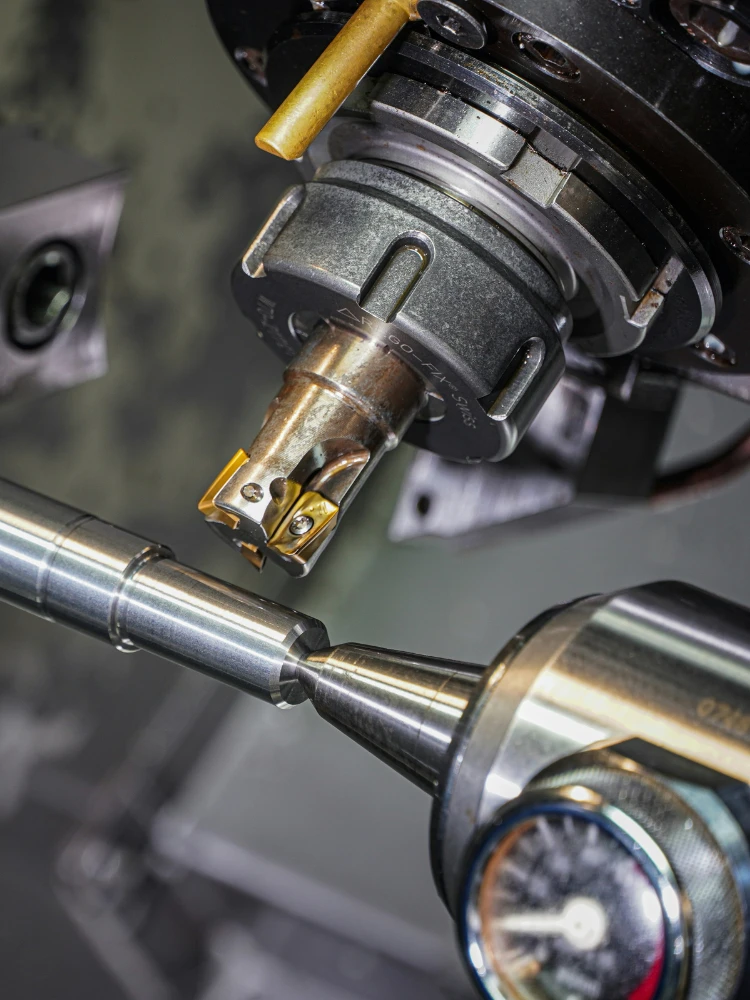CNC machining is a cornerstone of modern manufacturing, enabling high-precision production across industries such as aerospace, automotive, and medical technology. Two of the most commonly used CNC machining techniques are CNC milling and CNC turning. While these processes share some similarities, they serve different purposes and are best suited for distinct types of parts.
In this comprehensive guide, we will explore the key differences between CNC milling and turning, their unique advantages, and how to determine which process is best for your project.
What is CNC Turning?
CNC turning is a subtractive manufacturing process in which a cutting tool removes material from a rotating workpiece. It is typically performed on a CNC lathe or turning center, where the workpiece spins at high speed while a stationary cutting tool shaves off layers to achieve the desired shape.
How CNC Turning Works:
- The raw material (usually metal, plastic, or wood) is clamped into a rotating chuck.
- The CNC lathe spins the workpiece at a set RPM (revolutions per minute).
- A stationary cutting tool moves along the material, removing excess material.
- The tool follows programmed paths to shape the final component.
Advantages of CNC Turning:
- Ideal for cylindrical and conical parts.
- High precision and tight tolerances.
- Cost-effective for mass production.
- Faster machining times for symmetrical components.
Limitations of CNC Turning:
- Less suitable for complex geometries.
- Limited to rotational symmetry—non-cylindrical parts require additional machining.
What is CNC Milling?
CNC milling is another subtractive process, but in this case, the cutting tool rotates while the workpiece remains stationary (or moves along multiple axes). The process is carried out on a CNC milling machine, which can have 3, 4, or 5 axes for greater flexibility.
How CNC Milling Works:
- The workpiece is fixed onto a machine bed or vice.
- A high-speed rotating cutting tool moves along programmed paths.
- The milling cutter removes material from the top, sides, or bottom to create the final part.
- Advanced CNC mills can move in multiple axes to create complex 3D geometries.
Advantages of CNC Milling:
- Capable of machining flat, curved, and irregular surfaces.
- Supports multi-axis movement for complex parts.
- Suitable for one-off prototypes and custom designs.
- Works with a variety of materials, including metals, plastics, and composites.
Limitations of CNC Milling:
- Slower than turning for simple cylindrical parts.
- More expensive than turning due to complex tooling and setup.
Key Differences Between CNC Turning and CNC Milling
The main distinction between CNC turning and milling lies in how the material and cutting tool move. Here’s a direct comparison:
| Feature | CNC Turning | CNC Milling |
| Workpiece Movement | Rotates | Fixed or moves along multiple axes |
| Cutting Tool | Stationary | Rotates and moves |
| Best for | Cylindrical and conical parts | Complex and irregular geometries |
| Speed | Faster for symmetrical parts | Slower but more versatile |
| Precision | High for round parts | High for complex parts |
| Material Waste | Less | More, due to milling cuts |
| Cost Efficiency | Better for high-volume production | More expensive for complex parts |
Applications of CNC Turning vs CNC Milling
CNC Turning is commonly used for:
- Shafts, rods, and axles
- Cylindrical components such as bolts and screws
- Hubs and bushings
- Custom hollow tubing
CNC Milling is commonly used for:
- Brackets, enclosures, and housings
- Complex automotive and aerospace components
- Gears, keyways, and intricate mechanical parts
- Custom prototypes and one-off parts
Pros and Cons of CNC Turning and Milling
CNC Turning:
Pros:
- Highly efficient for producing round parts.
- Lower material waste.
- Faster cycle times for cylindrical components.
Cons:
- Limited ability to create complex shapes.
- Requires additional milling or secondary operations for non-round parts.
CNC Milling:
Pros:
- Allows for more complex geometries.
- Can machine a wide variety of materials.
- Supports both high-precision production and prototyping.
Cons:
- Slower than turning for simple parts.
- More material waste compared to turning.
How to Choose Between CNC Milling and CNC Turning
When deciding between CNC milling and CNC turning, consider the following factors:
1. Shape of the Part
- If the part is cylindrical or symmetrical, CNC turning is usually the best choice.
- If the part has flat surfaces, curves, or intricate features, CNC milling is the way to go.
2. Complexity of Design
- CNC milling can handle multi-axis movement for complex shapes.
- CNC turning is more limited in shape versatility.
3. Production Speed
- CNC turning is faster for simple shapes.
- CNC milling takes more time but can create complex designs in one setup.
4. Material Considerations
- Both processes work with metals, plastics, and composites.
- Milling generates more material waste compared to turning.
5. Budget and Cost-Effectiveness
- CNC turning is more cost-efficient for high-volume production.
- CNC milling is better suited for custom, one-off, or intricate designs.
Final Thoughts
Both CNC turning and CNC milling are indispensable machining processes in modern manufacturing. Understanding their differences will help you select the right method for your project, ensuring precision, cost-effectiveness, and efficiency.
If your project involves cylindrical or rotational parts, CNC turning is the best option. However, if you need intricate, multi-faceted, or complex components, CNC milling provides the necessary flexibility.
Looking for CNC machining services? Whether you need turning, milling, or a combination of both, choosing an experienced manufacturer is key to achieving the highest quality and precision.
Need Help With Your CNC Machining Needs?
At Aeron Automation, we specialise in high-precision CNC turning and milling, delivering top-quality components with tight tolerances. With 40+ years of expertise, our certified engineers use cutting-edge technology to ensure efficient, cost-effective manufacturing across industries like aerospace, automotive, and medical.
Looking for reliable CNC machining? Contact Aeron Automation today for expert solutions tailored to your needs!
